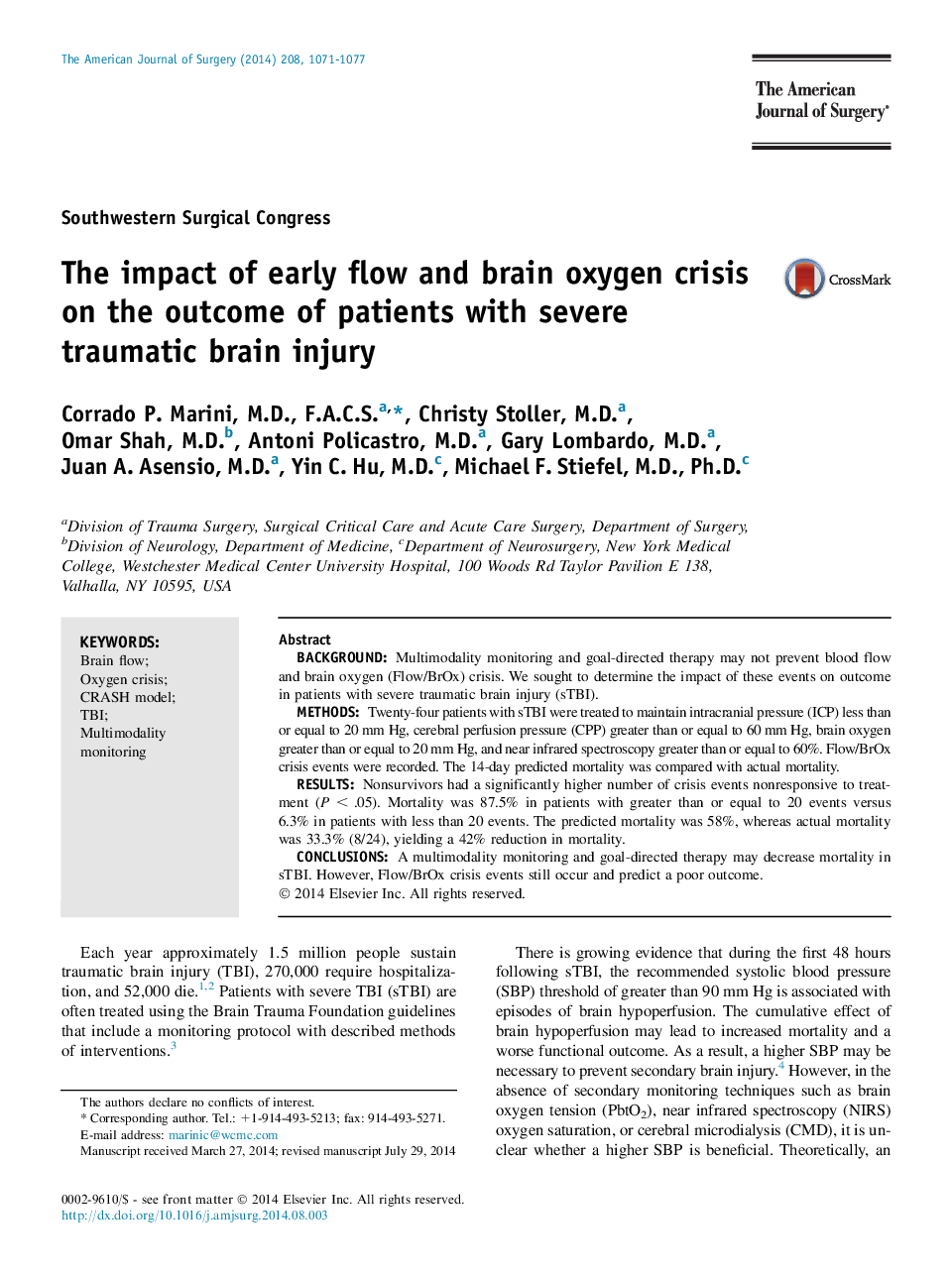| Article ID | Journal | Published Year | Pages | File Type |
|---|---|---|---|---|
| 4278414 | The American Journal of Surgery | 2014 | 7 Pages |
BackgroundMultimodality monitoring and goal-directed therapy may not prevent blood flow and brain oxygen (Flow/BrOx) crisis. We sought to determine the impact of these events on outcome in patients with severe traumatic brain injury (sTBI).MethodsTwenty-four patients with sTBI were treated to maintain intracranial pressure (ICP) less than or equal to 20 mm Hg, cerebral perfusion pressure (CPP) greater than or equal to 60 mm Hg, brain oxygen greater than or equal to 20 mm Hg, and near infrared spectroscopy greater than or equal to 60%. Flow/BrOx crisis events were recorded. The 14-day predicted mortality was compared with actual mortality.ResultsNonsurvivors had a significantly higher number of crisis events nonresponsive to treatment (P < .05). Mortality was 87.5% in patients with greater than or equal to 20 events versus 6.3% in patients with less than 20 events. The predicted mortality was 58%, whereas actual mortality was 33.3% (8/24), yielding a 42% reduction in mortality.ConclusionsA multimodality monitoring and goal-directed therapy may decrease mortality in sTBI. However, Flow/BrOx crisis events still occur and predict a poor outcome.
